How brands are staking their claim in the living room
The family settles in for a comfy evening routine, screens aglow throughout the home. Dad checks basketball scores on his tablet while the winsome daughter admires her friends’ Pinterest creations. The living room’s 65-inch smart TV commands attention as Mom navigates its home screen to the latest episode of the family’s favorite baking competition show. Alongside the usual streaming app recommendations, a stunning tropical beach resort scene appears, followed by a QR code leading to a page of exclusive vacation packages. Later, before the baking show’s suspenseful final round, an interactive ad for a snazzy kitchen appliance pops up, offering an attractive discount available via a simple click of the remote.

Neither travel nor kitchen brand sells streaming services, yet both have found their way into the family’s hallowed media space, seamlessly folding into an ecosystem formerly the exclusive domain of entertainment providers. This phenomenon plays out in millions of homes daily, illustrating the remarkable transformation of connected TV (CTV) advertising.
The early CTV advertising story was simple: streaming services marketed to people already streaming content. Like mobile’s evolution from ringtones and games to consumer brands from fashion to finance, CTV has transformed from a streaming-dominated medium into a dynamic performance channel where brands of all categories can thrive.
Today, streaming services fiercely battling for subscribers share the screen with automotive brands, insurance providers, quick-service restaurants, and specialty retailers—all discovering the medium’s unique engagement opportunities. In a recent webinar, Exploring CTV Growth Opportunities for Non-Endemic Brands, industry leaders from LG Ad Solutions, PMG, and Kochava unpacked this seismic shift. Their insights can be leveraged by brands of any category in navigating CTV’s challenges and exploiting its unique capabilities to reach engaged audiences in the living room.
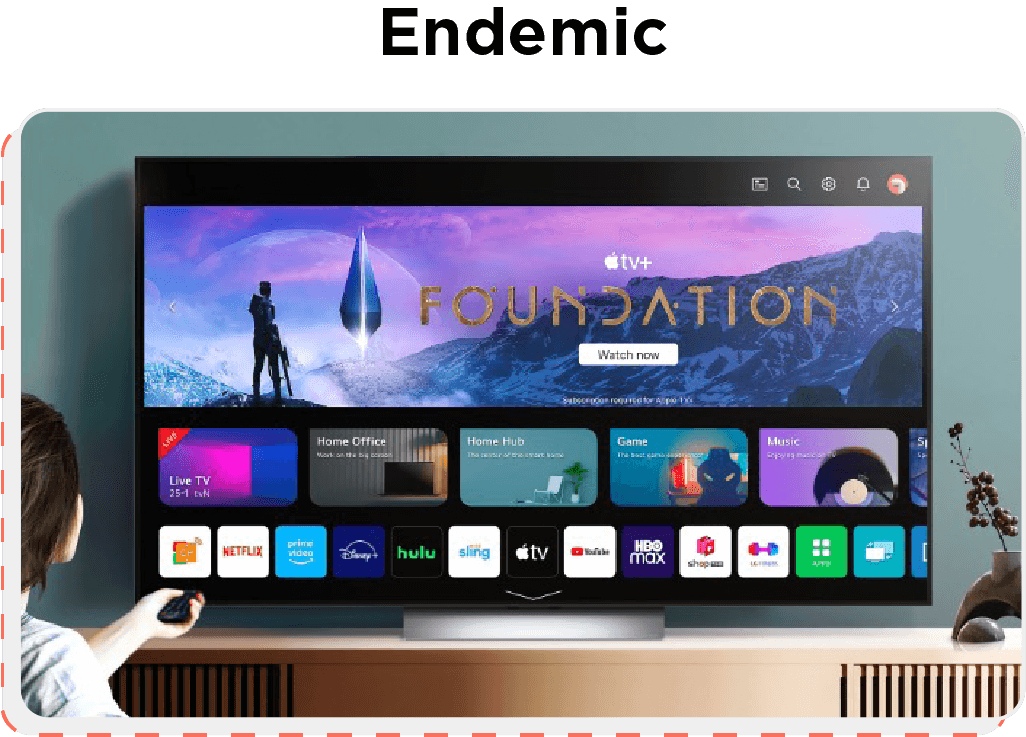
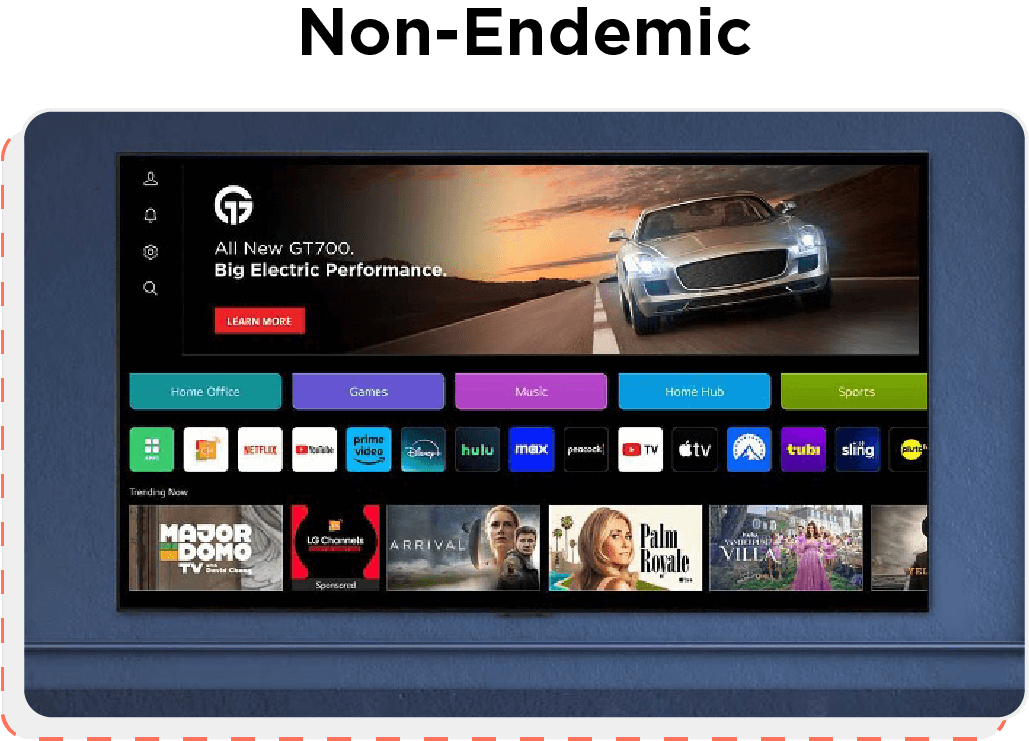
The Foundation: Endemic Advertising on CTV
The prominence of endemic advertisers in the early days of CTV was built into the technology itself. As Mike Brooks, Global Head of Business Development & Partnerships at LG Ad Solutions, notes, “OEMs historically didn’t have advertising businesses. When conversations began around increasing monetization, you generally had conservative headquarters groups very focused on consumer experience… so the first step they took was into this endemic media and entertainment world.”
For endemic advertisers, the value proposition was clear: Reach CTV viewers actively seeking entertainment with the ability to drive immediate conversion (i.e., app launches, free trial registrations, subscription sign-ups) directly on the platform. This has proven remarkably successful. Major streaming services report that CTV advertising drives subscriber acquisition with conversion rates up to 3X higher than other digital channels.

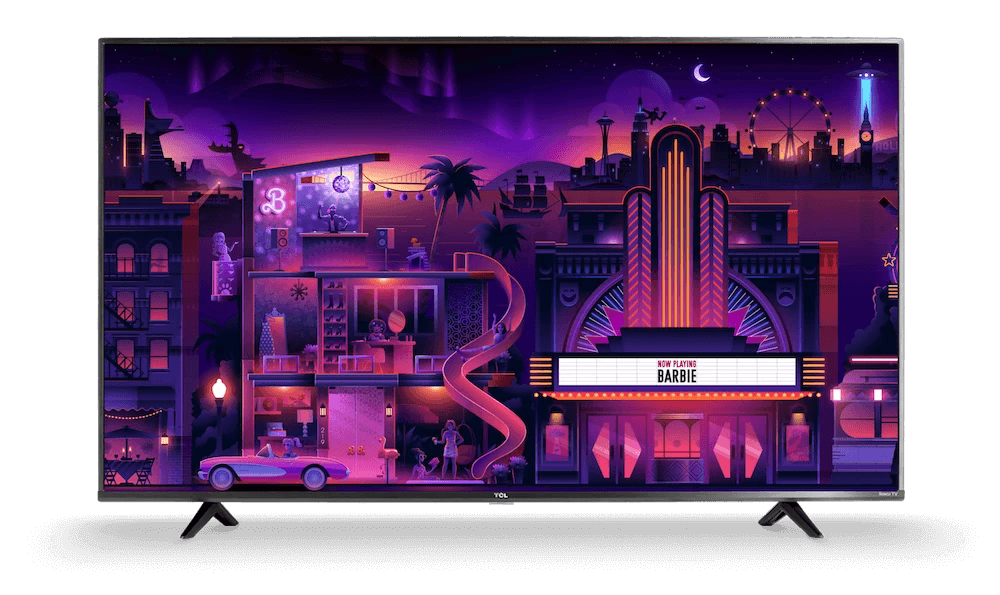
The infrastructure, measurement capabilities, and UX innovations developed for streaming created a foundation for a broader advertising ecosystem, as elements were established that could be utilized by non-endemic brands as well. As confidence in CTV’s effectiveness grew, the door opened for brands of all kinds to join the party.
The Great Expansion: Enter Non-Endemic Brands
What began as a streaming-focused medium has evolved into something far more expansive. We’ve seen this pattern in retail media networks, social platforms, and gaming environments—specialized channels growing to accommodate advertisers far beyond their original scope.
Grant Cohen, who leads Measurable Extension at Kochava, highlights what uniquely positioned CTV for this expansion: “The OEMs themselves are also the largest ad inventory owners, which means they have quite a lot of scale. And because they are also the platform, they can do a lot more unique things with the actual ad executions.” This differs markedly from mobile or web environments, where hardware manufacturers typically play no role in the advertising experience.
The pace of expansion is accelerating. LG began accepting non-endemic advertisers only in 2023, with other platforms quickly following suit, moving from cautious experiments to embracing advertisers across categories. This shift has been driven by growing consumer adoption, maturing measurement capabilities, and advanced targeting technology. Non-endemic advertisers quickly recognized the opportunity to reach engaged audiences in a premium environment with high completion rates and viewability—heading off challenges they often face in other digital channels.
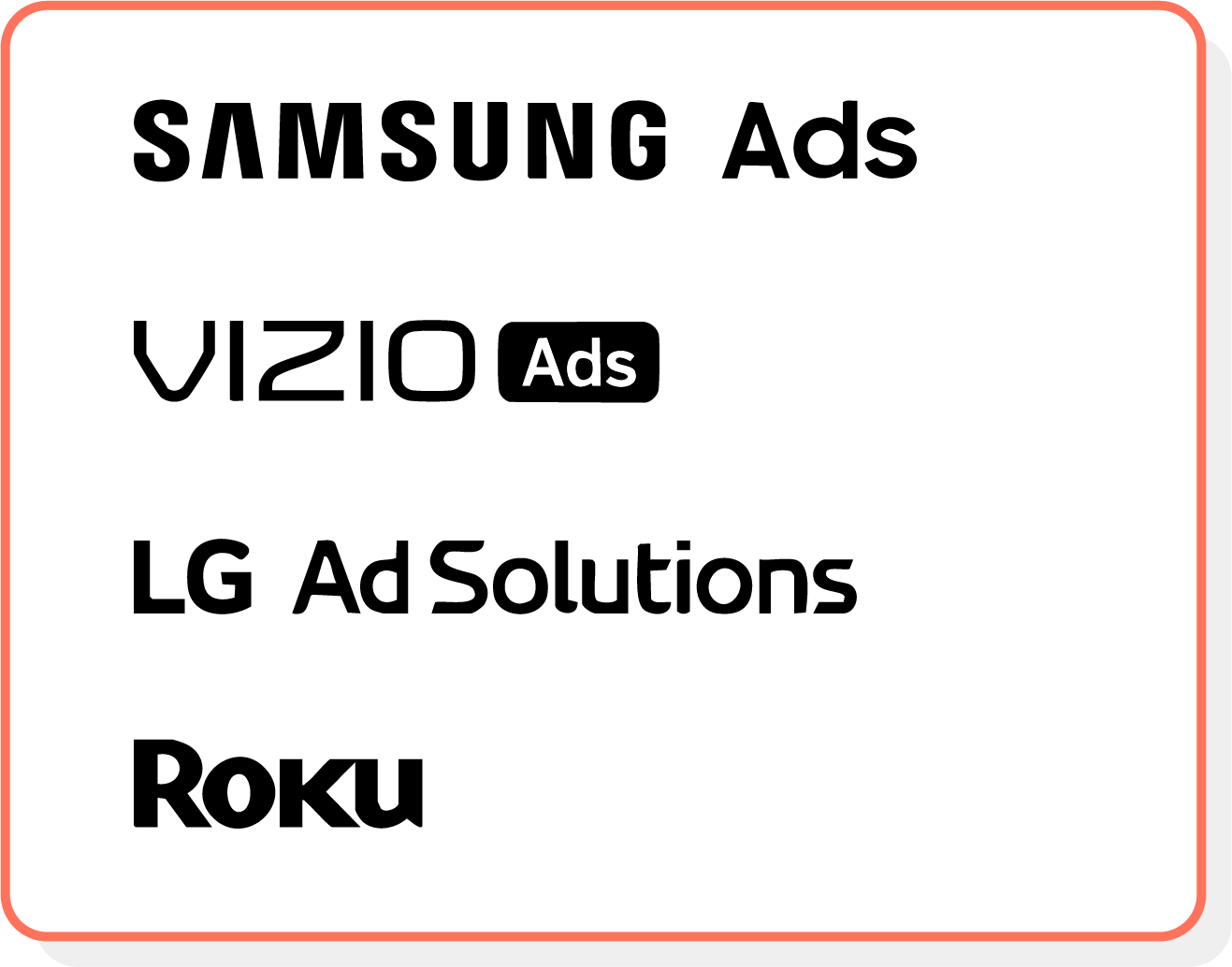
The entrance of non-endemic brands has sparked innovation across the ecosystem. Custom landing pages, interactive features, and intricate measurement solutions are transforming CTV into a potent performance marketing channel. For example, a national QSR chain using CTV to drive measurable foot traffic while maintaining brand objectives—showing how the medium can simultaneously serve upper- and lower-funnel goals.
Measurement: The Universal Challenge
For endemic and non-endemic advertisers alike, measurement remains a crucial challenge. While streaming services can track direct conversions within their apps, non-endemic brands must connect CTV exposure to actions taken on other devices or in physical locations.
This has driven innovation in measurement approaches. “We’re seeing a much bigger shift from measurement as a single source of attribution to measurement as a kind of portfolio of signals,” explains Mike Treon, Head of CTV and Video Strategy at PMG. This encompasses online conversions, in-store traffic, lifetime value, CRM acquisition, and more.
”We’re seeing a much bigger shift from measurement as a single source of attribution to measurement as a kind of portfolio of signals.
Mike TreonHead of CTV and Video Strategy at PMG
A key insight for brands moving into CTV is understanding that the medium requires different measurement windows than other digital channels. As Terrence Coles, Director of Sales Enablement at Kochava, points out, “We’ve seen tremendous impact within day 5, day 7, even 10 days out from a CTV exposure… It’s not the traditional mobile environment where it’s a 24-hour view-through lookback window.”
The extended timeline reflects how viewers process TV ads compared to the immediate response of mobile. Viewers may see an ad while watching a show, discuss with friends or family members, and then make a purchase days later. Capturing this full journey requires more “patient” measurement frameworks.
Establishing multiple measurement touchpoints provides comprehensive performance insights while helping build organizational confidence in CTV as a performance channel. By capturing both brand metrics and performance outcomes, marketing teams can build broader organizational support for CTV investment—particularly important for non-endemic brands just beginning to explore the channel.

Non-Endemic Brands: The Path Forward
Key considerations for non-endemic advertisers looking to enter or expand their presence in the space:
- Work with measurement partners to validate performance across different metrics
- Extend attribution windows to capture the full impact of CTV exposure
- Leverage cross-screen measurement to understand the complete consumer journey
- Invest in custom creative that leverages the unique capabilities of the CTV environment
- Build flexibility into media strategies to adapt to the dynamic CTV landscape
Creative Innovation in the Living Room
While measurement capabilities evolve, creative execution remains perhaps the most critical challenge for brands in CTV. “The biggest impediment we see right now is probably creative,” notes Treon. “A lot of what we are seeing on the CTV side is just really repurposed linear assets”—missing opportunities for deeper engagement.
While streaming services can utilize straightforward content previews, non-endemic brands face a steeper hurdle in bridging awareness and action, as conversions typically happen elsewhere. This has sparked innovation in CTV creative formats, including interactive features with custom landing pages.
QR codes have found new life in CTV advertising when thoughtfully integrated into creative executions. By the same token, dynamic creative optimization (DCO) is making inroads, enabling advertisers to modify creative elements in real-time based on viewer demographics, viewing context, or even local weather conditions. A travel advertiser might showcase different destinations based on the viewer’s location, while a restaurant chain could feature seasonal menu items that resonate with locavores.
Savvy brands are developing specific creative strategies that consider the unique CTV viewing environment: often shared with family members, more relaxed and attentive than mobile browsing. The most successful creative leans into this context rather than simply repurposing assets from other channels.
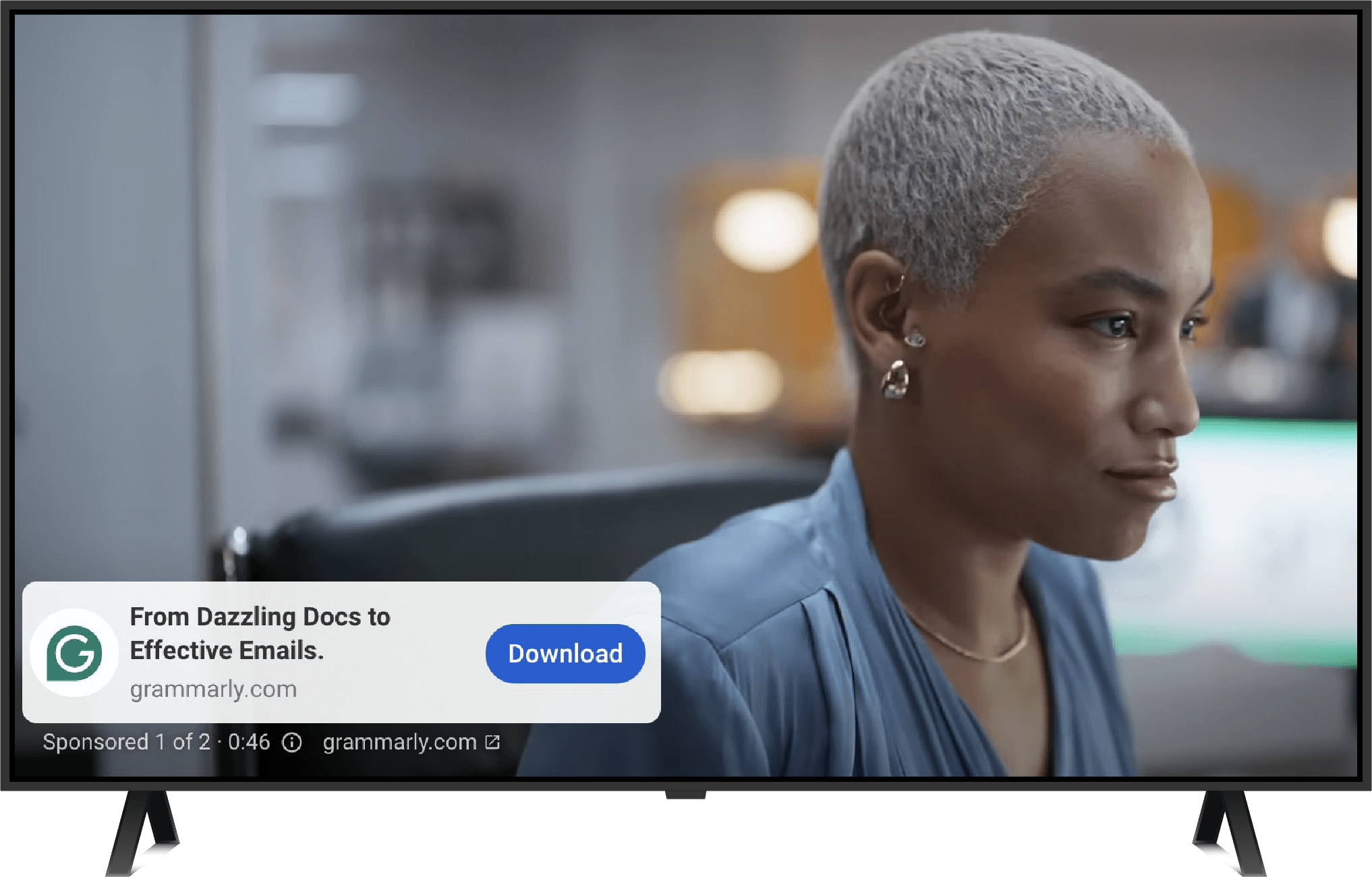
The Multicultural Opportunity
An often-overlooked dimension of CTV’s evolution is its exceptional potential for effectively reaching diverse audiences. Brooks shared recent research from LG Ad Solutions revealing that 70% of Hispanic viewers prefer ad-supported streaming content, with 61% watching FAST (free ad-supported television) more than two hours weekly—14% higher than the national average.
This highlights a significant marketing opportunity. While streaming wars have traditionally focused on subscription models, ad-supported content clearly resonates with multicultural audiences. For streaming services, this suggests developing targeted content with appropriate monetization strategies. For non-endemic brands, it offers access to valuable consumer segments in highly engaging environments.
The affinity for FAST (free ad-supported streaming TV) channels among diverse audiences is particularly noteworthy, as these platforms provide accessible entertainment options with the targeting capabilities of digital. Forward-thinking platforms are capitalizing on these trends, forming strategic partnerships that enhance multicultural targeting capabilities beyond basic demographics.
The key to success lies in authentic engagement—moving beyond translation to true cultural adaptation that resonates with specific cultural contexts, values, and preferences. Brands that invest in understanding these nuances will find particularly fertile ground in the CTV landscape.
Strategic Considerations for Advertisers
Whether streaming service or non-endemic advertiser, brands looking to maximize their CTV impact must navigate some key strategic considerations:
Creative Optimization
Treon emphasizes personalization: “One of the simplest things you can do is speak a different language in a creative to somebody who already may have the app on their phone vs. not.” For streaming services, this might mean highlighting exclusive content for non-subscribers while promoting new releases to existing customers. Retail brands could tailor creative based on purchase history.
AI-powered creative tools now afford marketers new options to reformat creatives dynamically from social, online video, and other environments into CTV-friendly assets, reducing barriers to entry.
Measurement Infrastructure
Before launching campaigns, establishing robust measurement frameworks is crucial. For non-endemic brands in particular, this means looking beyond traditional metrics to capture the full impact of CTV exposure.
Working with multiple measurement partners provides comprehensive performance insights while helping build organizational confidence in CTV as a performance channel. By demonstrating both brand impact and conversion outcomes, marketing teams can secure broader support for continued investment.
CTV Measurement Solutions With Kochava
- Real-time last-touch and multi-touch attribution
- Marketing mix modeling (MMM)
- Incremental lift studies
- Brand lift studies
Platform Strategy
Perhaps surprisingly, experts advocate for leaning into the fragmented nature of the ecosystem. “I embrace the fragmentation,” declares Treon. “CTV came of age in a world of hedged and walled gardens, and I don’t see that changing.”
This perspective shifts the conversation from seeking a single solution to orchestrating a strategy across multiple platforms. The plurality creates opportunities for precise audience targeting and optimizing campaigns toward the best-performing environments. Brands that master this complexity gain a significant competitive advantage.
The Road Ahead: From T-Commerce to Integrated Ecosystems
The next frontier for CTV advertising is what industry experts call t-commerce, or shoppable TV—turning television into a direct response medium. While streaming services already enable instant subscription sign-ups, innovative solutions are emerging for non-endemic brands as well.
Cohen explains, “When you run a [non-endemic] ad with LG, they’re going to create a customized experience on the CTV screen that will have a QR code, allowing you to jump to your core website or app.” Roku’s action ads enable viewers to click their remote for more information, automatically generating a text message with relevant links—no QR code scanning required. “We’re really early days in that stuff,” Cohen notes, “but the better it gets, the more we drive toward television-based commerce.”
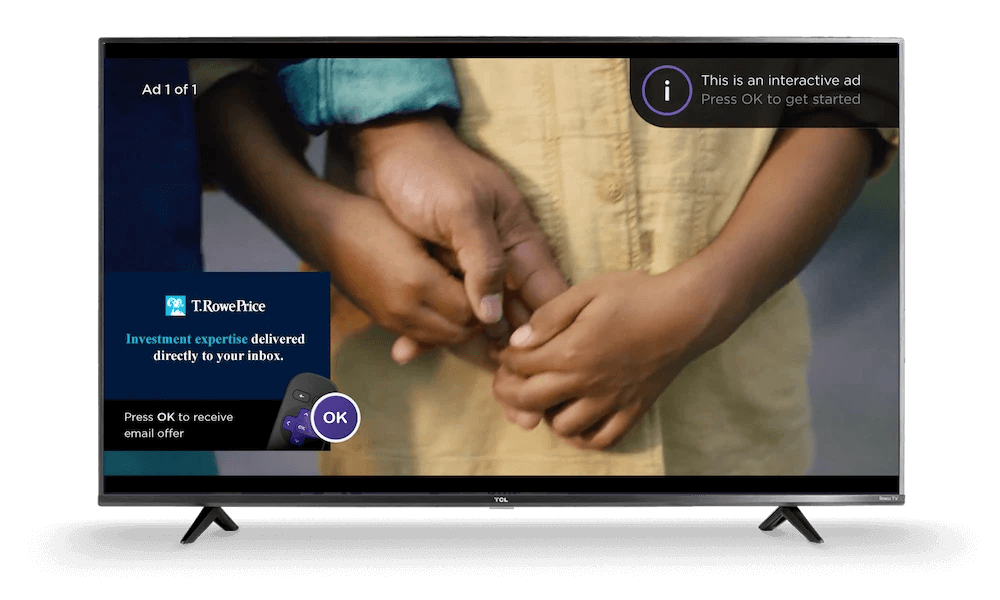
Beyond this, the CTV landscape continues to evolve along what Brooks calls “two different races”—one at the operating system level with OEMs competing to expand capabilities, the other among content providers adapting to direct-to-consumer models. While this increases complexity, it also enables more precise targeting and creative customization across an expanding array of inventory types.
“We need to lean into AI and programmatic,” Treon states, pointing to the future of content and creative optimization. With FAST channels now numbering in the thousands, AI is able to help brands identify optimal audience segments and deploy personalized creative at scale.
Simultaneously, the boundaries between CTV and other digital channels continue to blur. Cross-device measurement and targeting create seamless experiences that follow viewers from living room to mobile and beyond. The distinction between endemic and non-endemic advertising grows increasingly fluid as streaming services expand into commerce while retail brands create original content.
Just as our family eagerly awaits the final reveal in their baking competition show, the CTV advertising story is reaching its own exciting culmination—where the best-prepared brands rise to the top.
Watch the full webinar Exploring CTV Growth Opportunities for Non-Endemic Brands for additional insights and strategies from the expert panel of speakers.
Unlock Your CTV Success Story
As CTV continues to evolve, brands across all categories need measurement solutions that capture the full impact of their advertising investments. Kochava is a proven leader in comprehensive measurement for CTV, connecting exposures to actions across all manner of devices and platforms, providing the insights needed to optimize campaigns and demonstrate real business outcomes.
Ready to transform your CTV advertising strategy? Connect with our team of experts to learn how we can help you measure what matters in today’s living room.




